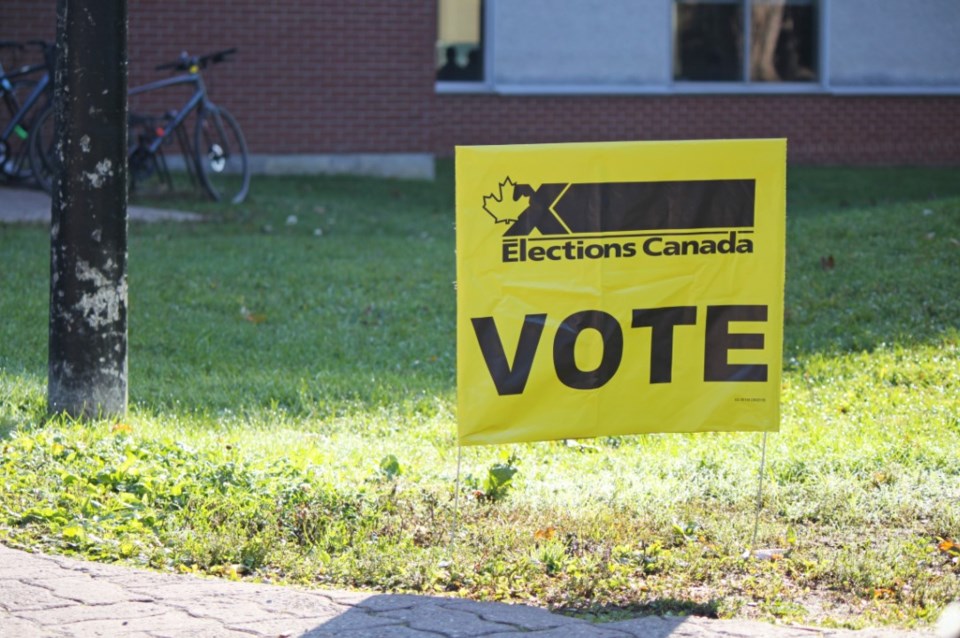Canadians looking to cast an early ballot for their next government can head to the polls starting Friday as advance voting opens across the country.
But while past election cycles meant a quick walk to a nearby church, community centre or even building lobby, this year will be different.
“That’s not really working in a pandemic,” says Elections Canada spokesperson Andrea Marantz. “There certainly have been places that have been unavailable to us because of the concern of the landlord.”
Marantz says holding an election in the middle of a pandemic has forced the independent body to adhere to a whole new set of requirements.
“Social distancing was a defining feature,” says Marantz. “The best way to do that was to find bigger polling sites and put more individual polls into them.”
Across the country, there are roughly six per cent fewer polling stations than in the 2019 federal election, according to Elections Canada data.
Several ridings in B.C. have actually increased the number of advance polling sites. Part of that increase is an answer to the rising popularity of early voting — over 700,000 British Columbians voted early in 2019, up from roughly 500,000 in 2015. The pandemic is only expected to drive more people to vote before election day on Sept. 20.
But look closer at the overall number of polling locations in each riding and some glaring differences emerge.
Compared to the 2019 federal election, there are more polling sites in the Metro Vancouver ridings of Coquitlam-Port Coquitlam (48 per cent), Vancouver Centre (34 per cent) and Delta (30 per cent).
In the riding of Saanich-Gulf Islands, however, several confined schools and church basements will no longer act as polling stations, adding to a 17 per cent decline in polling sites. Instead, many residents of North Saanich are getting directed to the Panorama Recreation Centre’s tennis bubble where people can spread out.
In Burnaby, the number of voting locations dropped this year — from 17 per cent in Burnaby North-Seymour to 26 per cent in Jagmeet Singh’s riding of Burnaby South.
In North Vancouver, the number of places to vote dropped 36 per cent compared to the 2019 election. And in the biggest polling station gap in the province, residents of Richmond Centre have 42 per cent fewer locations to vote this time around compared to last election cycle.
Richmond Centre represents the 16th biggest decline of any riding across Canada. Toronto Centre, meanwhile came in at number one with a 78 per cent decline in voting locations, according to data from Elections Canada.
Such gaps may require many people to drive, cycle or bus further to vote in person. Once there, the large number of polls should mean a voting experience similar to past election cycles, says Marantz.
“It’s a reality of a pandemic election. You have to prioritize different needs. Right now, the health and safety need comes first,” Marantz tells Glacier Media.
Each electoral district faces its own challenges when it comes to securing leases for polling locations. Shifting demographics, economic factors and a lack of available space all play a factor in how far a voter must travel to cast a ballot.
Across the country, that has meant larger declines in polling places in urban areas, where strata boards no longer set up polls in the lobby and where finding big enough spaces to vote in a pandemic is “an extra complicated game,” says Matthew McKenna, an Elections Canada spokesperson based in Ottawa.
“Normally, the school boards are kind of open territory. That’s not the case this year,” says McKenna. “It really does come down to district by district, riding by riding.”
HOW TO VOTE IN A PANDEMIC
Advance voting starts Friday, Sept. 10, and continues until Monday, Sept. 13. Polls open from 9 a.m. to 9 p.m. local time.
Like election day, voters must cast a ballot at their assigned polling place, noted on the back of their voter information card. You can also visit or call 1-800-463-6868 to find out.
You must prove your to vote.
Elections Canada says voters will find non-medical masks and hand sanitizer available at entrances and exits. Poll workers will be masked and physical distancing will be reinforced with directional signage. Voters are strongly encouraged to wear masks even in jurisdictions that don’t require them.
VOTE BY MAIL
Casting a ballot in person isn’t the only option open to voters. In fact, Elections Canada says anyone self-isolating or experiencing symptoms of COVID-19 should avoid the polls and vote through a .
Applications for a vote-by-mail package can be made before 6 p.m., Tuesday, Sept. 14 at any Elections Canada office. You can also apply for one online at or by phone (1-800-463-6868) before the deadline.
Marantz says that anyone who doubts whether their ballot will arrive by election day can drop off the vote-by-mail form at one of their riding’s polling stations.
“You can also ask a neighbour, friend or family in your same electoral district to drop it off,” says the Elections Canada spokesperson.




